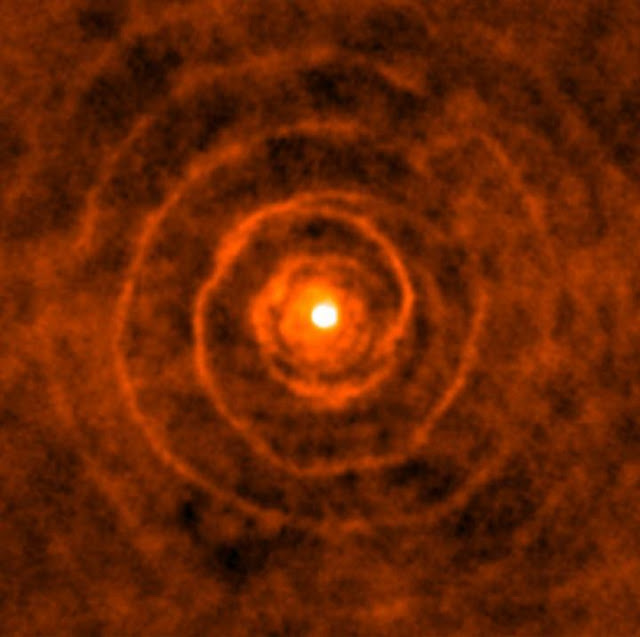

| Online: | |
| Visits: | |
| Stories: |

| Story Views | |
| Now: | |
| Last Hour: | |
| Last 24 Hours: | |
| Total: | |
The Final Act of a Dying Red Giant Star
An international team of astronomers has observed a striking spiral pattern in the gas surrounding a red giant star named LL Pegasi and its companion star 3,400 light-years from Earth, using a powerful telescope in northern Chile called Atacama Large Millimeter/submillimeter Array, or ALMA.
This is a molecular gas around star LL Pegasi.

Credit: ALMA, Hyosun Kim
After comparing their telescopic observations with computer simulations, the astronomers concluded that a highly elliptical orbit is responsible for the shape of the gaseous emissions surrounding this system.
The research appears in the journal Nature Astronomy and is the cover story of the March issue.
“Because of the orbital motion of the mass-losing red giant, the cold molecular gas constituting the wind from that star is being spun out like the sprays of water from a rotating garden sprinkler, forming the outflowing pattern of spiral shells,” Morris said.
The images, which show many complete revolutions of the spiral pattern, offer clues about the dynamics of the binary system over a period of 5,000 years.
Visualizing the ALMA image cube of LL Pegasi. Each frame of the video shows the molecular gas emission from LL Pegasi for a different line-of-sight velocity. It starts with the gas moving towards us, and ends with the gas moving away from us. The field size is 20,000 times the distance between the Sun and the Earth.
Stuart Wolpert
UCLA
Source:


